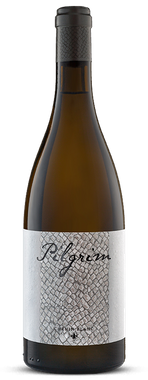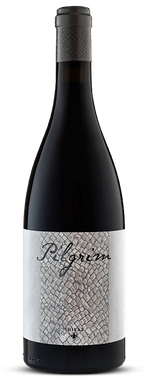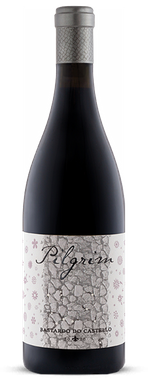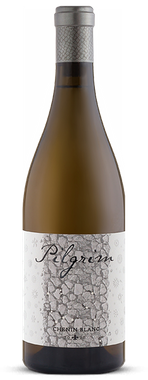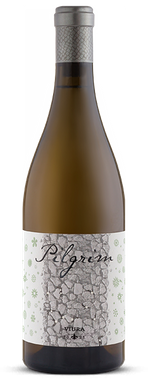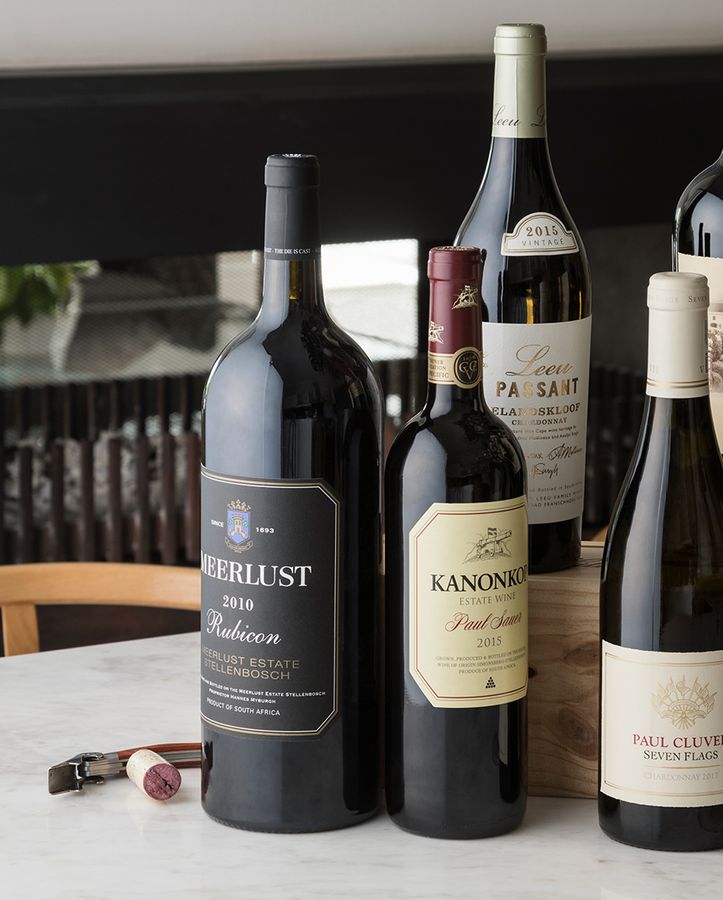At the beginning of the year, Henry, also head winemaker at Mulderbosch, graciously gave us a small allocation of their maiden vintages to sell as part of our Inevitable Vintage campaign. (Remember when we had to psyche ourselves up for what was to come?) Given the huge response we received, despite the fact that their coveted Bastardo do Castello, the first-ever Trousseau wine made in South Africa, had already sold out (there are only 66 VINES ok) - we simply HAD to get our hands on this, their latest vintage.
As such, we thought we’d get Henry to tell us a bit MORE, you know, from the proverbial horse’s mouth. And share with you the makings of yet another pioneering pilgrim winemaker, who had the guts and guile to introduce never before seen varieties, to a pandemic-weary country, in a year of unprecedented alcohol bans, WINNINGLY. The mere fact that these wines EXIST, a story in itself. The fact that there’s a Viura (a grape called Macabeo in Spain). You do the math.
As such, we invite you to discover Pilgrim Wines, as narrated by winemaker Henry Kotze.
What is the mission statement of Pilgrim Wines?
Our brand draws upon the daily inspiration of life and the road it sets us on. Everyone’s story is different and unique. What truly stands out are the accents (good) and troughs (not so good), but in between, there are always treasures to be found. The in-between is where life happens. It is important to be fully present during the journey – just like a Pilgrim patiently walking the road, one step at a time. We focus on innovative methods with tried and tested cultivars and experiment with unorthodox, unfamiliar cultivars. We like to discover the new and untried pathways in the journey from grape to bottle.
How long have you been producing wines under this label, and how do you see it evolving in the next five years?
Our maiden wine was a 2017 Bastardo do Castello, released in June of 2020. It made quite a few waves as the first Bastardo do Castello produced and released in South Africa. In the last few years, we have added a Chenin blanc, a Shiraz, and more recently, an exciting white variety called Viura. So four wines in total, and as a brand that wants to stay small, four wines are good for now.
While your range includes stellar, usual suspects like Chenin Blanc and Shiraz, the inclusion of Viura and Trousseau are interesting additions. Please explain what they are and WHY you’ve included them in your range?
The Pilgrim brand is all about innovation and experimentation. While we push the boundaries in methodologies used in producing our Chenin blanc and Shiraz, we also went out looking for those up-and-coming varietals that nobody has ever heard of. We chose Trousseau (or Bastardo in SA) and Viura (or Macabeu in Spain) back in our university days. Both Riëtte and I had this inherent fascination in ampelography (the field of botany concerned with the identification and classification of grapevines) in our viticultural class, having to study a huge book of different grape varietals apparently found in SA. While it was fun to look at the differences in the leaves and stems of the pictures in the book, we did not find the amazing variety of vines when it came to commercial production. You had all the big hitters, but nobody wanted to produce those small niche varietal wines from those interesting cultivars we had in our book. So we vowed that one day if nobody took on that challenge, we would take it onto ourselves to seek them out and give them a worthy platform to shine. It’s been more than 20 years that I have been making wine, and in the meantime, we started a family, and our kids are all grown up, but that university dream still lingered. There has been a great awakening in the SA wine industry with winemakers increasingly trying and experimenting with different varietals, which is great! But there still remains work to be done.
Did you set OUT to find Trousseau in the Cape, or did it find you?
It did find us. Having a keen liking for it is already a good thing, but coming across it while looking for something else very commercial (Sauv blanc for the cellar I was working for back then) was a very nice surprise! Imagine a farmer telling you you can have all the Sauv blanc and shows you what else he has available, only to notice a very small piece of a parcel penciled in with something looking like Bastard! Really small, because there are only 66 vines. Now that was a nice find!
Similarly, how did you FIND Viurra in the Cape?
That we went out looking for specifically. While Pilgrim Wines is my side hustle, my full-time job is as head winemaker for Mulderbosch Vineyards. One of our growers is a fairly big player in the Breedekloof Valley. I knew the Viura was there somewhere, but was wanting to find out more while there, and asked my grower. As providence would have it, he said that he actually has 200 vines, and what’s more, he doesn’t know how he can produce a standalone wine from 200 vines, he neither has the time nor the cellar capability, as he can’t handle those small volumes effectively. I graciously took it off his hands. Win-win.
Riëtte, as a viticulturist, what are your requirements of a grower, and do you usually assist in farming the different sites you buy grapes from? As a viticulturist researcher for a period, my practical day-to-day experience is pretty limited. I know what I want from a block of vines, but I put my trust in my growers to produce the fruit that I am looking for. They are the people responsible for their precious grapes, and both Henry and I value every relationship that we have forged with our grower along this journey. They do become very close, almost closer than a friend, it’s more like family because we both care deeply for something more tangible than just the fruit from a vine during a harvest. It’s more like an investment into the future, a time capsule of sorts. Wine is bottled memories of a vintage gone by, memories shared with people who had a hand in its forming. That’s precious, that’s treasure.
Henry, as winemaker at Mulderbosch as well, are there elements from your day job that influence THIS brand?
Or was it more international experiences that informed your focus? The fact that my day job is the same as my side hustle makes for quite a few opportunities for both brands to benefit from each other. Not only am I experimenting and learning a great deal with Pilgrim, but whatever I glean out of that process I am automatically ploughing back into the thinking behind Mulderbosch if it can add any benefit. Mulderbosch, on the other hand, reciprocates by giving me both opportunities and contacts that I would not have had previously to create a demand in the Pilgrim label for me to continue my experimenting. But looking back to my pre-Mulderbosch days, I would say a big influence in my current winemaking philosophy, would be Italy, Piedmont, Barolo, and Nebbiolo (maybe a little Tuscany and Sangiovese also)
If so, what international wine regions have inspired you and why?
While traveling and exploring Italy through the late Giulio Bertrand’s connection (which were vast) while at Morgenster, I got the chance to taste, experience, and live a part of the fascinating wine culture/lifestyle that is Nebbiolo. The introspection that the winemakers and growers are implementing, always trying to better themselves, and to more “correctly” or naturally express their sense of place, was quite inspiring to me. Some of them went the technical route of innovation and forward-thinking, some went the traditional way of back to basics, and keeping to what works. I saw the heart in both, and that was the love for their product, and to get people to experience it as they saw it, to get better in telling that story through the wine. People are important, wine is there to tell a story to inspire them to be better, isn’t that what we do? Try and be better? For me, wine is that inspiration to get there.
Do you have any mentors or key experiences that led you and Riëtte to start your own brand?
Starting out as a young intrepid winemaker, I had a few big figures who helped me mould my winemaking identity. These included Neil Ellis, my earliest mentor, as well as Andre van Rensburg where I started my career. More recently though, I feel that my interactions with Pierre Lurton and Pierre Olivier-Clouet from Cheval Blanc formed a big part in how I think about wine.
As Platter’s Newcomer Winery of the fateful 2021, how was your year, given all the struggles and uncertainties inherent to it?
Our year of Platter’s Newcomer Winery was phenomenal, and It must be said that even though we launched while lockdown and the alcohol restrictions were almost at their most dire, the industry was really open and receptive to what we are trying to do. There were ample opportunities to (virtually) get our wines out there and tell our story. It really was a year to remember!
What wines will you be serving with your Christmas lunch??
Given our (my) German roots, we tend to celebrate the birth of Jesus Christ on the eve of the 24th, with lots of food! So there will be a bottle of Pilgrim Bastardo do Castello on the table for sure. Some international favourites will also be gracing the linen (Maybe a Pio Cesare Barolo, Cerreto, or even a Cheval Blanc), you never know what story needs to be told!
